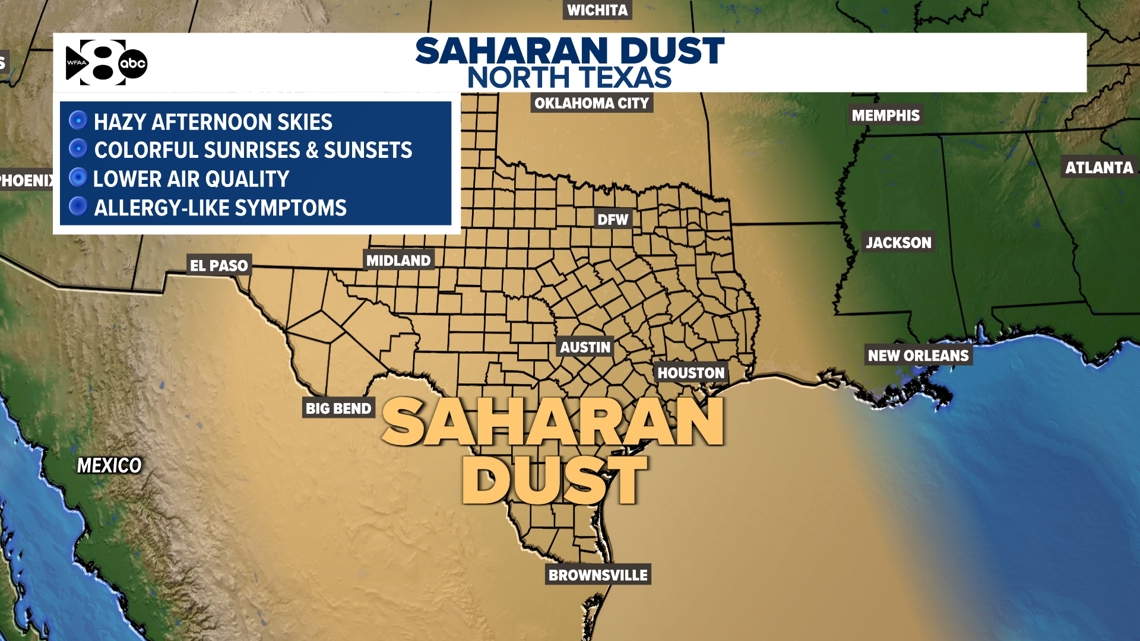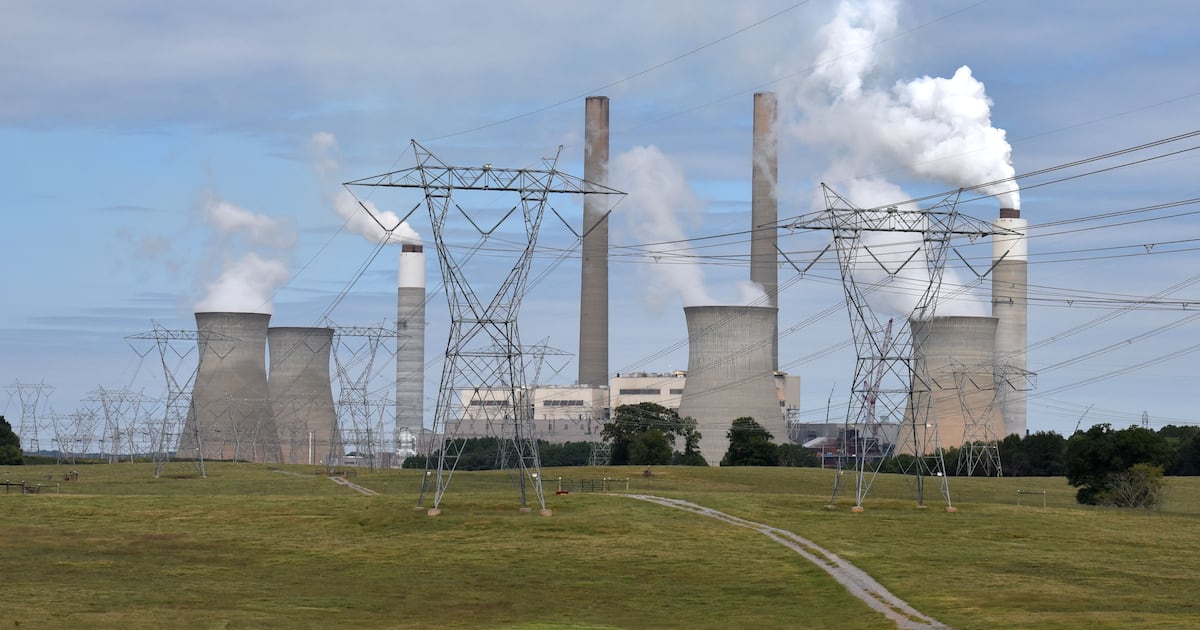Understanding The Saharan Dust Storm Impacting North Texas

Welcome to your ultimate source for breaking news, trending updates, and in-depth stories from around the world. Whether it's politics, technology, entertainment, sports, or lifestyle, we bring you real-time updates that keep you informed and ahead of the curve.
Our team works tirelessly to ensure you never miss a moment. From the latest developments in global events to the most talked-about topics on social media, our news platform is designed to deliver accurate and timely information, all in one place.
Stay in the know and join thousands of readers who trust us for reliable, up-to-date content. Explore our expertly curated articles and dive deeper into the stories that matter to you. Visit Best Website now and be part of the conversation. Don't miss out on the headlines that shape our world!
Table of Contents
Understanding the Saharan Dust Storm Impacting North Texas
North Texas residents are experiencing hazy skies and reduced air quality, thanks to a significant Saharan dust plume currently impacting the region. This isn't an uncommon occurrence, but the intensity and duration of this year's event have many wondering about the impact on health, visibility, and even the environment. Let's delve into understanding this natural phenomenon and its effects on our area.
What is the Saharan Dust Storm?
The Saharan Air Layer (SAL) is a massive body of dry, dusty air that originates over the Sahara Desert in Africa. Driven by strong winds and atmospheric pressure systems, this layer of air travels thousands of miles across the Atlantic Ocean, often reaching the Caribbean, southern United States, and even parts of Europe. The dust itself consists of fine sand and soil particles, carrying minerals like iron and calcium across the globe. While this phenomenon occurs annually, the intensity and reach vary considerably each year.
Impact on North Texas:
This year's Saharan dust storm is impacting North Texas in several ways:
-
Reduced Air Quality: The most immediate impact is a noticeable decrease in air quality. The fine dust particles can irritate the lungs and exacerbate respiratory conditions like asthma and allergies. Many residents are reporting increased coughing, sneezing, and eye irritation. Check your local air quality index (AQI) for updates and consider limiting outdoor activities during periods of high pollution. The provides real-time air quality information.
-
Haziness and Reduced Visibility: The dust significantly reduces visibility, creating hazy skies and impacting driving conditions, especially during sunrise and sunset. Drivers are advised to exercise caution and maintain a safe following distance.
-
Sunrises and Sunsets: While reduced visibility is a concern, the dust also creates spectacular sunrises and sunsets. The dust particles scatter and filter sunlight, leading to vibrant colors in the sky. Many photographers are capturing stunning images of this phenomenon.
-
Potential Impact on Weather: While the primary impact is on air quality, some studies suggest Saharan dust can influence weather patterns, affecting rainfall and temperature. The long-term implications of this interaction are still being studied.
Protecting Yourself from Saharan Dust:
- Check the Air Quality Index (AQI): Monitor the AQI regularly and limit outdoor activities when levels are high.
- Stay Hydrated: Drink plenty of water to help your body flush out irritants.
- Wear a Mask: Consider wearing an N95 mask when spending time outdoors, especially during periods of high dust concentration.
- Protect Your Eyes: Wear sunglasses to shield your eyes from dust particles.
- Limit Outdoor Exercise: Reduce strenuous outdoor activities during periods of poor air quality.
Looking Ahead:
The duration of this Saharan dust event is difficult to predict precisely. Meteorologists and air quality experts continue to monitor the situation closely and provide updates. Staying informed through reputable news sources and government agencies is crucial. This event serves as a reminder of the interconnectedness of our global atmosphere and the far-reaching impact of natural phenomena.
Keywords: Saharan dust storm, North Texas, air quality, AQI, haze, visibility, respiratory health, weather, environmental impact, Sahara Desert, SAL (Saharan Air Layer), dust particles, air pollution, health precautions.

Thank you for visiting our website, your trusted source for the latest updates and in-depth coverage on Understanding The Saharan Dust Storm Impacting North Texas. We're committed to keeping you informed with timely and accurate information to meet your curiosity and needs.
If you have any questions, suggestions, or feedback, we'd love to hear from you. Your insights are valuable to us and help us improve to serve you better. Feel free to reach out through our contact page.
Don't forget to bookmark our website and check back regularly for the latest headlines and trending topics. See you next time, and thank you for being part of our growing community!
Featured Posts
-
 Trump Expands Pardons To More Convicted Gop Congress Members
May 31, 2025
Trump Expands Pardons To More Convicted Gop Congress Members
May 31, 2025 -
 Transgender Athletes Win At California Track Finals Ignites Rule Change Discussion
May 31, 2025
Transgender Athletes Win At California Track Finals Ignites Rule Change Discussion
May 31, 2025 -
 French Open 2024 Runes Smooth Path To Round Three
May 31, 2025
French Open 2024 Runes Smooth Path To Round Three
May 31, 2025 -
 Texas Basketball Coach Sean Miller Discusses Challenges Of Lost Covid Year
May 31, 2025
Texas Basketball Coach Sean Miller Discusses Challenges Of Lost Covid Year
May 31, 2025 -
 Red Carpet Style Top Watches Spotted At The 2025 Indy 500
May 31, 2025
Red Carpet Style Top Watches Spotted At The 2025 Indy 500
May 31, 2025
Latest Posts
-
 Jell O Arms Sloane Stephens Honest Account Of Upper Body Burnout In Tennis
Jun 01, 2025
Jell O Arms Sloane Stephens Honest Account Of Upper Body Burnout In Tennis
Jun 01, 2025 -
 Georgia Powers Grid Capacity Questioned Amid Unprecedented Data Center Expansion
Jun 01, 2025
Georgia Powers Grid Capacity Questioned Amid Unprecedented Data Center Expansion
Jun 01, 2025 -
 Expert Tennis Picks Zverev Cobolli And Griekspoor Quinn At Roland Garros
Jun 01, 2025
Expert Tennis Picks Zverev Cobolli And Griekspoor Quinn At Roland Garros
Jun 01, 2025 -
 Super Bowl 2026 Analyzing The Early Odds And Potential Participants
Jun 01, 2025
Super Bowl 2026 Analyzing The Early Odds And Potential Participants
Jun 01, 2025 -
 Luxury Watches Dazzle At The 2025 Indy 500 Red Carpet Event
Jun 01, 2025
Luxury Watches Dazzle At The 2025 Indy 500 Red Carpet Event
Jun 01, 2025
